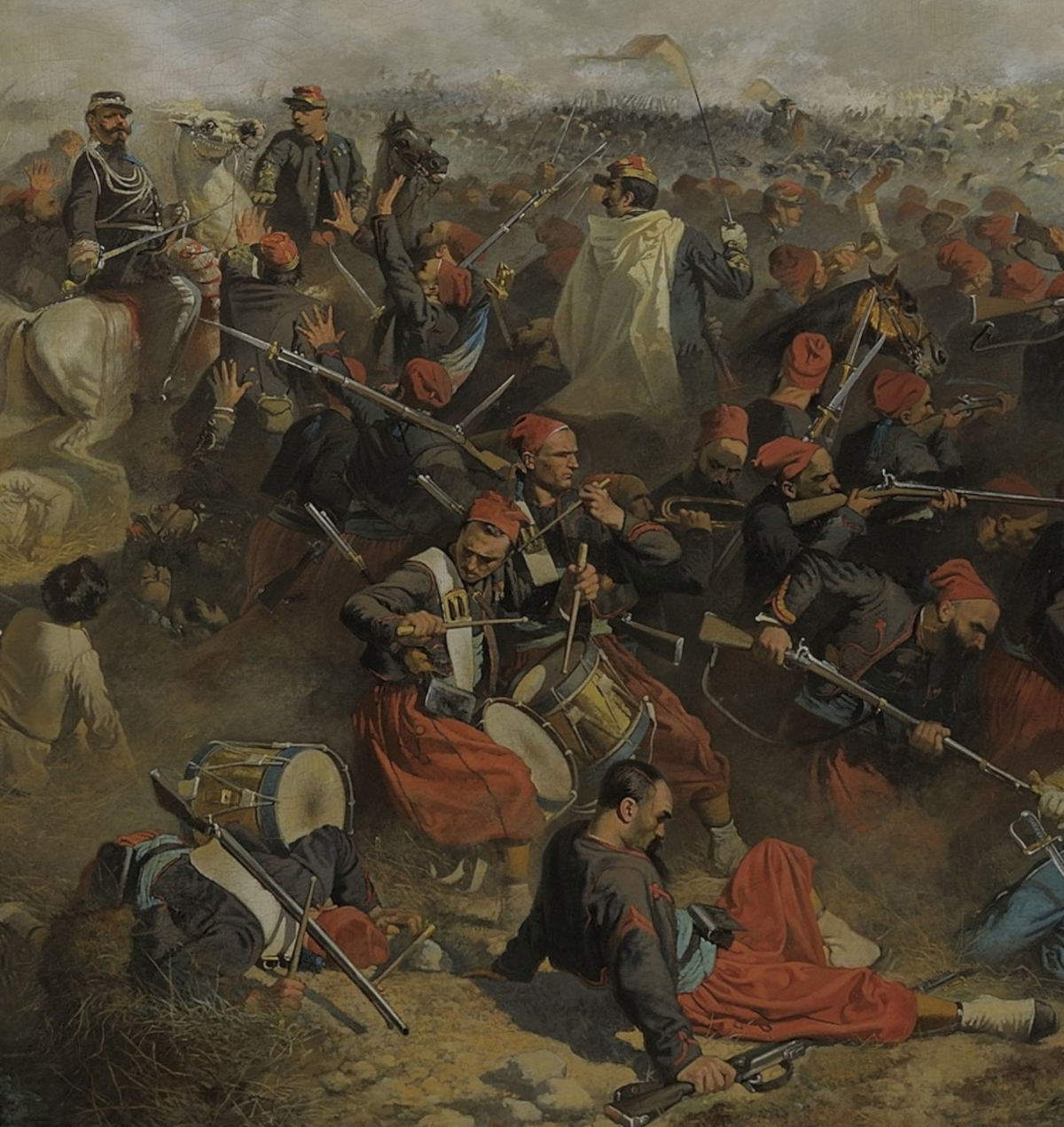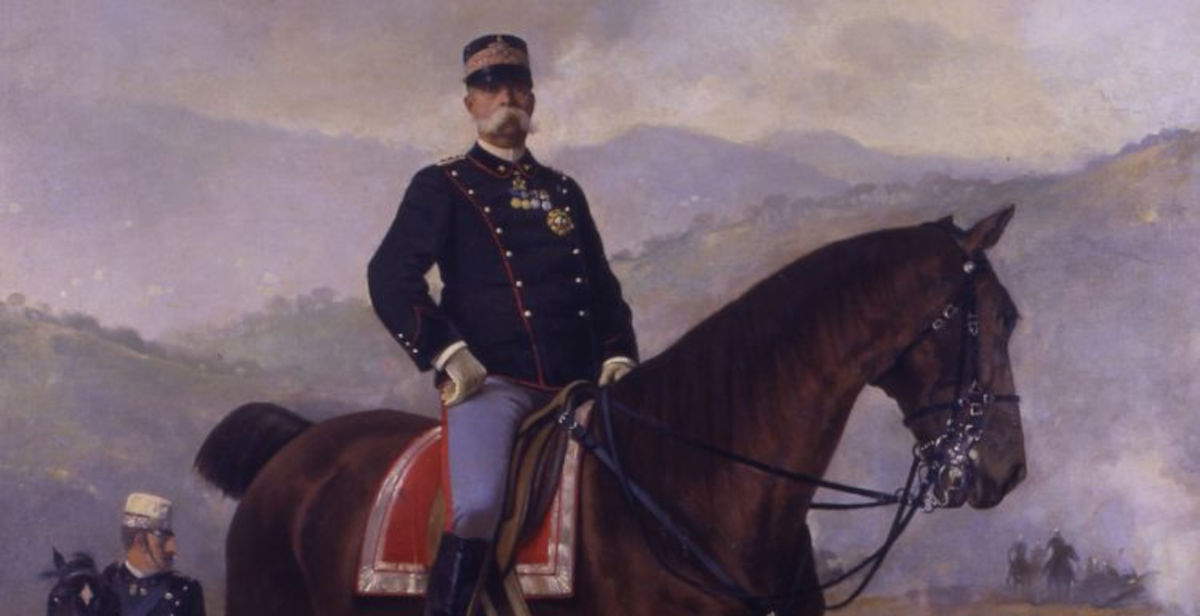From December 20, 2025 to April 26, 2026, the National Museums of Lucca and the Palazzo Galeotti Museum in Pescia are hosting The King’s Painter. Luigi Norfini in the Italy of the Risorgimento, the first major monographic exhibition dedicated to the Pescia painter Luigi Norfini (Pescia, 1825 - Lucca, 1909) on the occasion of the bicentennial of his birth. The exhibition, curated by Luisa Berretti, Emanuele Pellegrini and Ettore Spalletti, takes place in several venues: the Casermetta of Villa Guinigi, Palazzo Mansi in Lucca and the Palazzo Galeotti Museum in Pescia, allowing the public to be given a complex picture of Norfini’s career and the historical context in which he worked.
The exhibition finds its fulcrum in the Casermetta of the National Museum of Villa Guinigi, where for the first time numerous paintings by the master are brought together, compared with works by peers and friends such as Giovanni Fattori, Silvestro Lega and Telemaco Signorini, protagonists of Risorgimento painting. The exhibition includes loans from museums in Milan, Turin and Florence, along with private collections, many of which have never been shown to the public. The collaboration with Norfini’s heirs was crucial, making it possible to present an extremely complete set of works. The installation, curated by Luigi Cupellini, ideally extends to the works housed in the permanent collection of Palazzo Mansi and in the recently refurbished collection of the Museo Civico di Palazzo Galeotti in Pescia, where the artist’s paintings and drawings are located. Trained at the Academy of Fine Arts in Florence under Giuseppe Bezzuoli, Norfini participated as a volunteer in the Wars of Independence, documenting the events in the field with a series of drawings that remain among the most vivid accounts of the Risorgimento. His career was closely linked to the House of Savoy and academic institutions in Florence and Lucca, where he also served as director, organizing exhibitions and promoting the protection of artistic heritage. In Lucca, the city of his maturity, he became a point of reference for local and national figurative culture.

It highlights Norfini’s ability to represent Italy in the making through large paintings of battles, portraits of the new bourgeoisie and Italy’s first rulers. In more than half a century of activity, he helped define the visual language of 19th-century Tuscany, with an approach that combined civic engagement and artistic sensibility. Major works include two large battle paintings, Vittorio Emanuele II and the Zouaves. Victory at Palestro (1863), from the Museo Nazionale del Risorgimento in Turin, restored for the exhibition by the Centro Conservazione Restauro La Venaria Reale, and Carlo Felice Nicolis, Count of Robilant, wounded in the left hand continues to give orders to his artillery, also known as The Battle of Novara (1859), from the Museo del Risorgimento in Milan. Comparing these canvases allows visitors to immerse themselves in the ideals and passions of the Risorgimento period.
Organized in thematic sections, the exhibition traces the artist’s career from his beginnings to the early 20th century, evoking figures and events in Italian history such as Silvio Pellico, Vincenzo Gioberti and Giuseppe Giusti. Alongside the great paintings of battles, many of which became part of the royal collections of Victor Emmanuel II, works by Ademollo, Fattori, Lega and Signorini are displayed, creating a stimulating comparison. Of particular note arethe Visit of King Victor Emmanuel to the Castle of Brolio (c. 1870), made for the Ricasoli Barons, which documents the link with Bettino Ricasoli and the decorative activity of the Castle of Brolio, and The Duke of Monmouth Asking for Forgiveness (1873), made for the English collector Frederick Stibbert, which testifies to the international interest in Norfini’s historical production. A series of portraits of the rising bourgeoisie and some studio interiors, the last examples of his artistic production, complete the itinerary.

The exhibition was also an opportunity to restore new life to the recently renovated spaces of Villa Guinigi and the Palazzo Galeotti Museum, presenting the public with restored works recovered from storage. Workshops and educational activities organized by the museums’ educational services are planned for schools and younger audiences, while specialists will lead dedicated tours for all levels of interest. In parallel, a catalog published by Maria Pacini Fazzi Editore will be published. The exhibition is sponsored by the National Museums of Lucca, Regional Directorate Museums of Tuscany of the Ministry of Culture, the City of Lucca, the IMT Alti Studi School of Lucca, the Palazzo Galeotti Museum and the City of Pescia. The project is realized with the support of Fondazione Cassa di Risparmio di Lucca, Direzione Generale Musei and the Region of Tuscany.
Luigi Norfini represented one of the most conscious voices of the Italian 19th century. After training at the Accademia di Belle Arti in Florence with Giuseppe Bezzuoli and Luigi Mussini, he came into contact with the Tuscan cultural milieu of the time and with artists such as Giovanni Fattori and Silvestro Lega. He participated directly in the Risorgimento: in 1848 he enlisted as a volunteer at Curtatone, an experience that profoundly influenced his vision and work. The canvases dedicated to the battles of Novara, Palestro and San Martino restore the atmosphere of Italy in the process of unification and highlight the role of the people involved in the historical events.
His ties with the House of Savoy were solid: the sovereigns commissioned several works from him, including the large portrait of Victor Emmanuel II destined for the Throne Room of the Quirinale. Alongside his historical painting, Norfini developed a notable activity as a portraitist of the emerging bourgeoisie, professionals, scholars and figures in public life who sought in his paintings a balanced image attentive to the psychological dimension. For more than twenty years he was director of the Royal Institute of Fine Arts in Lucca, participated in numerous academies and received official recognition, establishing himself as a promoter of the artistic culture of his time. His activity as a teacher and mentor left a lasting mark on his students, with whom he maintained constant and deep relationships throughout his life.
 |
| Luigi Norfini and the Italy of the Risorgimento: the great exhibition in Lucca and Pescia |
Warning: the translation into English of the original Italian article was created using automatic tools. We undertake to review all articles, but we do not guarantee the total absence of inaccuracies in the translation due to the program. You can find the original by clicking on the ITA button. If you find any mistake,please contact us.